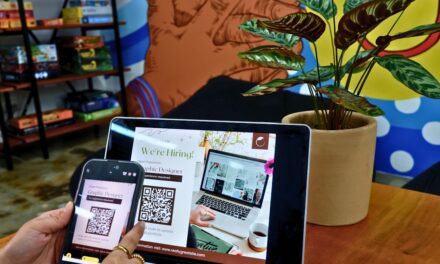In today's world, where remote work has become the norm rather than the exception, adopting the best leadership practices for enhancing team engagement in remote work settings is crucial for success. Did you know that engaged employees are 17% more productive than their less-engaged counterparts? As leaders navigate this new landscape, they face the challenge of maintaining high levels of motivation, collaboration, and productivity among their teams, despite the physical distance. This blog post delves into effective strategies that empower leaders to foster a connected and engaged workforce, ensuring that remote teams not only thrive but also excel in achieving their organizational goals.
Understanding the Challenges of Remote Team Engagement
Common Issues Faced by Remote Teams
Remote work has brought numerous benefits but also challenges that can impact team engagement. Understanding these hurdles is crucial for leaders aiming to implement the best leadership practices for enhancing team engagement in remote work settings. Some common challenges include:
Communication Barriers: Misunderstandings can arise from lack of face-to-face interaction.
Isolation: Team members may feel disconnected from their colleagues and company culture.
Motivation Fluctuations: The absence of a structured office environment can affect individual motivation levels.
Work-Life Balance: Difficulty in separating work from personal life can lead to burnout.
The Importance of Engagement in a Virtual Environment
In a remote work setting, engagement is vital for productivity and morale. Engaged employees are more likely to be motivated, innovative, and committed to the organization. According to Gallup, organizations with higher employee engagement report 21% greater profitability. Therefore, adopting the best leadership practices for enhancing team engagement is essential for fostering a positive remote work environment.
Best Leadership Practices for Enhancing Team Engagement in Remote Work Settings
Establishing Clear Communication Channels
Effective communication is the cornerstone of successful remote teams. Leaders should prioritize establishing diverse communication methods:
Regular Video Calls: Use tools like Zoom or Microsoft Teams for face-to-face meetings.
Project Management Platforms: Utilize platforms such as Asana or Trello for task tracking and updates.
Instant Messaging: Implement tools like Slack to facilitate quick and informal communication.
Setting Clear Expectations and Goals
To keep a team aligned and focused, it’s crucial to set clear goals and expectations. This involves:
Defining individual and team objectives.
Setting deadlines and milestones for projects.
Maintaining a transparent approach to performance metrics.
Fostering a Culture of Trust and Accountability
Trust is fundamental in remote environments. Leaders should cultivate this by:
Encouraging autonomy in decision-making.
Acknowledging and addressing mistakes without blame.
Promoting an open-door policy for discussions and concerns.
Utilizing the Right Technology and Tools
Leveraging technology effectively can significantly enhance engagement. Some effective tools include:
Collaboration Tools: Tools like Google Workspace for sharing documents and working collaboratively.
Feedback Platforms: Implementing tools like SurveyMonkey to gather team feedback.
Recognition Software: Using platforms like Bonusly to celebrate achievements and boost morale.
By focusing on these best leadership practices, leaders can effectively enhance team engagement in remote work settings, leading to more motivated and productive teams. For more insights on remote work effectiveness, check out Microsoft's Remote Work Resource.
Promoting Team Cohesion and Connection
Building Relationships through Regular Check-ins
One of the most effective tactics for enhancing team engagement in remote work settings is to conduct regular check-ins with team members. This practice fosters a sense of belonging and allows leaders to understand their team's well-being. Consider implementing:
Weekly One-on-Ones: Schedule dedicated time for individual discussions to address concerns and create a supportive atmosphere.
Team Huddles: Conduct brief team meetings to encourage open dialogue and share updates.
Feedback Sessions: Create opportunities for team members to provide and receive constructive feedback.
Encouraging Social Interactions and Team-Building Activities
Social interaction plays a vital role in maintaining team morale, especially in remote settings. Leaders should encourage informal engagements, such as:
Virtual Coffee Breaks: Organize casual virtual meetups for team members to unwind and connect.
Online Team Games: Plan fun activities like trivia nights or online escape rooms to strengthen team bonds.
Interest-Based Groups: Facilitate the creation of clubs focused on hobbies or interests, fostering deeper connections outside of work-related topics.
Celebrating Wins and Recognizing Contributions
Acknowledgment is crucial for boosting morale and motivation. Incorporate recognition practices that highlight individual and team achievements:
Shout-Outs in Team Meetings: Take time during meetings to recognize team members’ hard work and accomplishments.
Recognition Programs: Implement formal recognition programs to reward outstanding performance.
Monthly Celebrations: Host virtual events to celebrate team milestones, birthdays, or project completions.
By actively promoting team cohesion and connection, leaders can leverage the best leadership practices for enhancing team engagement in remote work settings, leading to a more unified and high-performing team. For further insights into improving team dynamics, visit Harvard Business Review’s Articles on Remote Team Management.
Providing Continuous Learning and Development Opportunities
Tailoring Training Programs to Individual Needs
Continuous professional development is essential for maintaining team engagement in remote settings. Leaders should prioritize customized training programs that align with individual career aspirations and team objectives. Effective strategies include:
Individual Development Plans (IDPs): Collaborate with team members to set personalized development goals.
Skill Assessment: Regularly assess team skills and identify areas for improvement to ensure relevant training.
Access to Learning Resources: Provide subscriptions to online learning platforms like LinkedIn Learning or Coursera.
Encouraging Knowledge Sharing within the Team
Fostering a culture of knowledge sharing not only enhances engagement but also cultivates innovation. Implement practices that encourage team members to share their expertise:
Lunch-and-Learns: Host informal sessions where team members present topics of interest.
Mentorship Programs: Pair experienced employees with those seeking guidance to facilitate knowledge transfer.
Collaborative Projects: Create cross-functional teams to promote skill exchange and diverse perspectives.
Supporting Career Growth through Mentorship
Establishing a mentorship program can significantly impact employee engagement and motivation. By connecting team members with mentors, leaders can support their career aspirations. Consider these approaches:
Formal Mentorship Programs: Organize structured mentorship opportunities within the organization.
Peer-Buddy Systems: Pair newer team members with seasoned employees for guidance and support.
Regular Check-ins: Encourage mentors and mentees to have consistent check-in meetings to monitor progress and facilitate discussions.
By integrating these best leadership practices for enhancing team engagement in remote work settings, organizations can empower their employees to develop, grow, and contribute meaningfully. For additional insights into the importance of continuous learning, explore resources from LinkedIn Learning.
Gathering Feedback and Making Adjustments
The Importance of Feedback Loops
Establishing effective feedback loops is a core component of the best leadership practices for enhancing team engagement in remote work settings. Gathering feedback not only helps leaders understand team dynamics but also signals to employees that their opinions are valued. Effective practices include:
Regular Surveys: Use tools like Google Forms or SurveyMonkey to gather anonymous feedback on various aspects of remote work.
Real-Time Feedback Mechanisms: Implement tools that allow employees to provide feedback instantly, such as Slack polls.
Focus Groups: Organize small group discussions to explore specific topics in greater depth.
Adapting Leadership Strategies Based on Team Input
Leaders must be prepared to adapt their strategies based on the feedback received. This responsiveness can significantly enhance team morale and engagement. Consider the following actions:
Review and Respond: Regularly review the feedback collected and publicly acknowledge it to the team. Demonstrating that their voices are heard is crucial.
Implement Changes: Make tangible changes based on feedback to address concerns or suggestions.
Communicate Adjustments: When changes are made, clearly communicate how team input influenced decisions. This transparency fosters trust and strengthens overall engagement.
By continuously gathering feedback and making necessary adjustments, leaders can ensure they are implementing the best leadership practices for enhancing team engagement in remote work settings, ultimately leading to a more collaborative and productive workforce. For further reading on the importance of feedback in remote teams, check out Gallup’s Insights on Employee Feedback.
Conclusion: The Future of Remote Leadership
Embracing Flexibility and Adaptability
The future of remote work is dynamic, and to remain effective, leaders must embrace flexibility and adaptability. This approach not only aligns with the evolving nature of work but also plays a pivotal role in maintaining team engagement. Key strategies include:
Adjustable Work Schedules: Allow team members to choose their own working hours to accommodate personal preferences and peak productivity times.
Hybrid Work Models: Consider implementing a blend of remote and in-office work to cater to diverse employee needs.
Ongoing Training: Provide continuous training on new collaboration tools and remote work best practices to help teams adapt effectively.
The Long-Term Benefits of Engaged Remote Teams
Engaging remote teams can lead to remarkable long-term benefits for organizations, including:
Increased Productivity: Engaged employees are more likely to be productive and committed to their roles.
Lower Turnover Rates: High engagement levels contribute to employee satisfaction and retention.
Enhanced Innovation: A connected team is more likely to share ideas and collaborate, leading to innovative solutions.
By implementing the best leadership practices for enhancing team engagement in remote work settings, leaders can create a thriving, motivated workforce that is ready to tackle the challenges of the future. For further exploration into the future of remote work, check out McKinsey's Insights on Remote Work.
Implementing Effective Leadership Practices
Creating a Supportive Environment
To enhance team engagement in remote work settings, it is essential for leaders to create a supportive and safe environment. This can be achieved through various actions:
Encouraging Open Communication: Promote a culture where team members feel safe to share their ideas and concerns without fear of repercussion.
Providing Resources for Mental Health: Offer access to mental health resources and encourage employees to utilize them, which can help mitigate stress and increase well-being.
Fostering Inclusivity: Ensure all team members, regardless of their location, feel included in discussions and decisions.
Prioritizing Work-Life Balance
One of the best leadership practices for enhancing team engagement involves prioritizing work-life balance. Leaders should acknowledge that remote work can blur the lines between personal and professional life. Effective strategies include:
Promoting Time Off: Encourage team members to take regular breaks and use their vacation time to recharge.
Setting Boundaries: Establish clear expectations around availability to prevent burnout and ensure employees can disconnect after work hours.
Flexible Work Arrangements: Allow for flexible working hours so team members can manage their responsibilities outside of work more comfortably.
Investing in Technology and Tools
Utilizing the right technology is critical in remote work environments. Leaders should focus on providing:
Collaboration Platforms: Tools like Microsoft Teams or Slack for seamless communication and project management.
Performance Tracking: Systems that allow for transparent tracking of individual contributions without micromanaging.
Regular Training and Updates: Ensure employees are familiar with the latest technology updates to maximize efficiency in their tasks.
By implementing these effective leadership practices, organizations can foster an engaging remote work environment that not only improves team dynamics but also enhances overall productivity. For more information on leading remote teams effectively, visit Harvard Business Review's insights on Remote Work.
What are the key challenges of remote team engagement?
One of the major challenges of remote team engagement includes communication barriers, where misunderstandings can arise due to the lack of face-to-face interactions. Additionally, team members may experience feelings of isolation, making it harder for them to feel connected to their colleagues and the company culture. Maintaining motivation can also be difficult, as the structured office environment is absent. Lastly, ensuring a healthy work-life balance can lead to burnout if employees struggle to separate their professional and personal lives.
How can leaders build trust within remote teams?
Building trust in remote teams begins with clear and open communication. Leaders should foster a culture of transparency by sharing information and encouraging honest dialogue. Setting clear expectations while empowering team members to make their own decisions is also crucial. Leaders must acknowledge individual contributions and mistakes without assigning blame, thereby creating a supportive environment that promotes collaboration and trust.
What role does technology play in enhancing remote team engagement?
Technology plays a fundamental role in enhancing remote team engagement by facilitating real-time communication, collaboration, and project management. Tools such as video conferencing platforms, instant messaging applications, and project management software help maintain connectivity and streamline workflows. Additionally, utilizing engagement and feedback tools allows leaders to monitor team dynamics and make necessary adjustments based on employee input.
Why is regular feedback important for remote teams?
Regular feedback is vital for remote teams as it helps identify areas for improvement, aligns expectations, and reinforces a culture of continuous learning. Feedback loops allow leaders to gather insights into team dynamics, employee morale, and overall performance. By actively engaging in this process and implementing changes based on feedback, leaders show their commitment to employee well-being, which in turn boosts engagement and productivity.
How can leaders promote work-life balance in remote settings?
Leaders can promote work-life balance in remote settings by encouraging flexible working hours and ensuring that employees take regular breaks and utilize their vacation time. Setting clear boundaries regarding availability can help employees disconnect after work hours. Additionally, fostering an open dialogue about mental health and workload can empower team members to speak up and seek support when needed, ultimately leading to a healthier and more balanced work environment.





